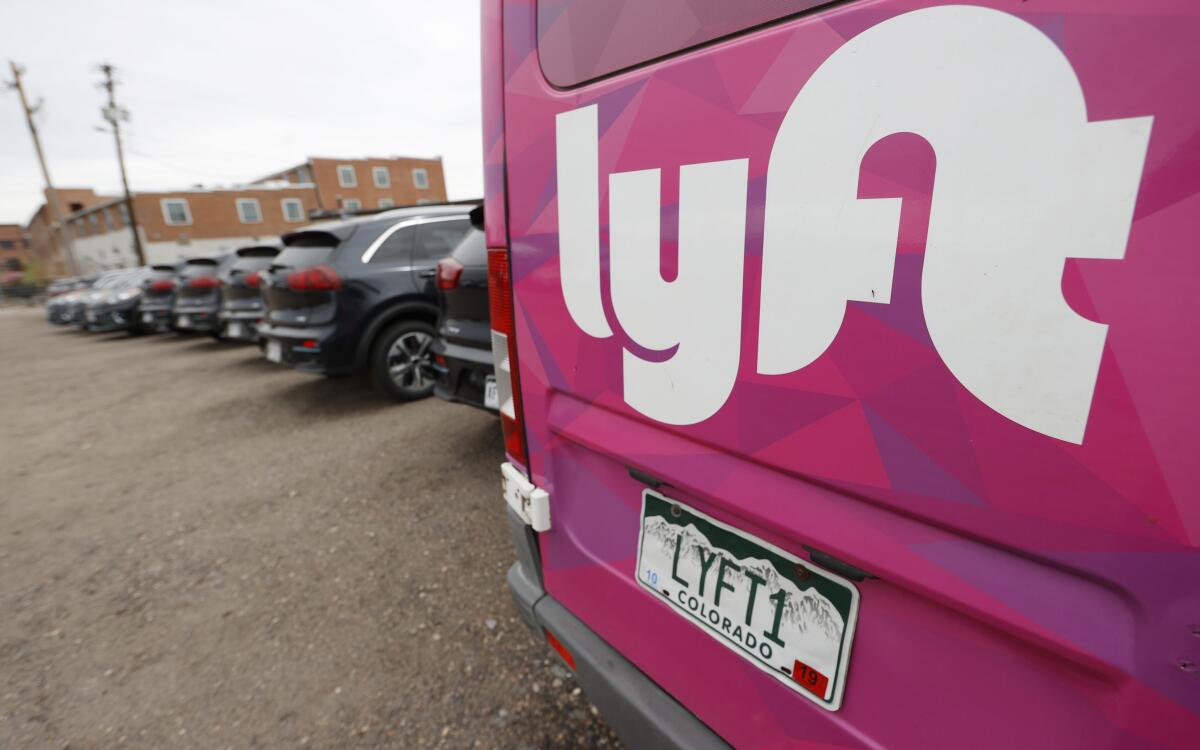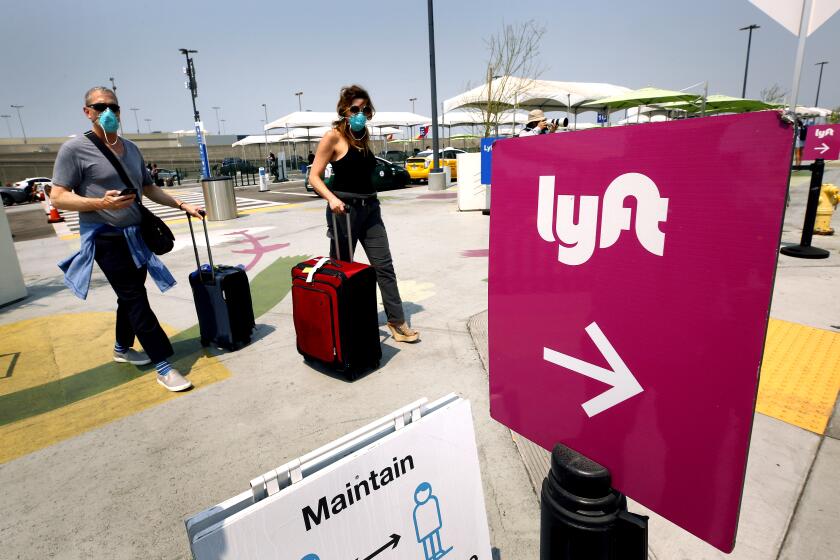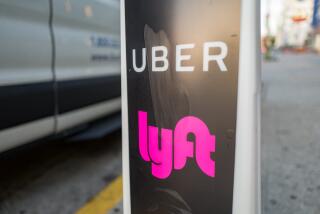Lyft wrings more money from each rider after deep cost cuts

- Share via
Lyft Inc. is inching closer to breaking even as it squeezes more revenue out of each customer, a result of deep cost cutting.
The ride-hailing company reported an adjusted loss excluding tax, interest and other costs of $150 million in the fourth quarter, wider than a year earlier but better than an average of analysts’ estimates compiled by Bloomberg. Total ridership remains down because of the COVID-19 pandemic.
Shares of Lyft climbed about 9% in extended trading Tuesday. Results were announced after the end of regular trading, when its shares rose 23 cents, or 0.4%, to $53.64.
John Zimmer, Lyft’s co-founder and president, said companywide cost cuts guarantee Lyft will “absolutely” turn a quarterly adjusted profit this year. However, he declined to provide a forecast for the first quarter, citing uncertainty around vaccine distribution.
The company exceeded goals to reduce spending last year and is focused on going further this year, Zimmer said in an interview Tuesday. “We were targeting $300 million of annualized savings, and we came out with $360 million,” he said.
Partly a result of trimming costs, revenue per rider increased 2.3% to $45.40 in the three months that ended Dec. 31. Analysts expected $41.99.
Revenue was $569.9 million in the quarter, down 44% from a year earlier. Total active riders declined 45% to about 12.6 million
Lyft is entirely reliant on demand for transportation, which was decimated by the pandemic. The company struck delivery partnerships with Grubhub for food and Blue Cross Blue Shield for pharmaceuticals but has been unable to keep pace with Uber Technologies Inc., which shifted its own business toward delivery. In December, Lyft lowered its outlook.
Both companies shared a victory over California lawmakers and a contingent of their workers in November. Voters in the state passed a corporate-backed ballot initiative to exempt the companies from a law designed to give employee protections to gig-economy workers. Lyft will provide some additional perks to drivers this year as a result of the ballot measure.
Zimmer views the victory as a “turning point” in policy discussions nationwide, he said on a conference call with analysts Tuesday.
Uber, Lyft and other gig companies spent millions of dollars to shape California labor law in their image. The result: support from voters in neighborhoods as varied as Beverly Hills and Compton.
As Lyft weathers the pandemic, it ended the year with more assets than analysts expected. It reported $2.6 billion, including cash, short-term investments and items for which the company has already paid.
Performance in the first quarter is expected to be flat or slightly below the previous one, Brian Roberts, chief financial officer, said on the conference call. It will be the last time Lyft reports negative revenue growth for a while, he said. “It’s impossible for us to predict Q1 rides with any confidence,” Roberts said.
Lyft plans to cut an additional $35 million and bring on more drivers in the current quarter, in anticipation of a recovery during the spring. A first adjusted profit could come as soon as the third quarter, Roberts said.
More to Read
Inside the business of entertainment
The Wide Shot brings you news, analysis and insights on everything from streaming wars to production — and what it all means for the future.
You may occasionally receive promotional content from the Los Angeles Times.











